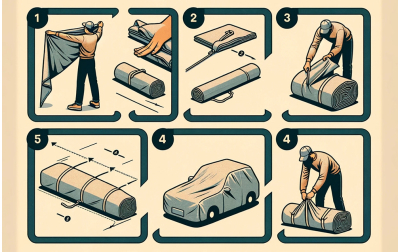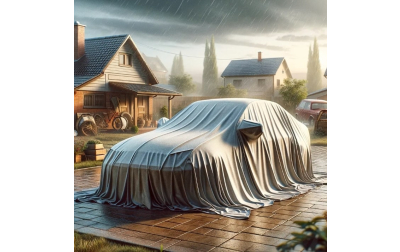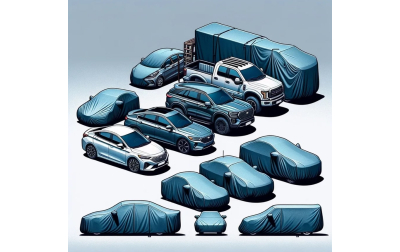
Do Car Covers damage paint?
Car covers are widely used to shield vehicles from environmental damage, helping protect the paint and overall condition of the car. However, there’s a lingering concern among car owners: do car covers do more harm than good, especially when it comes to paint damage? While car covers are meant to be protective, they can inadvertently damage the paint if not selected or used properly. In this blog, we’ll explore various factors that can cause car covers to damage paint, from fit to material quality, and provide insights on how to choose the right cover to prevent such issues.
This blog will cover the following points:
- Can a Car Cover Scratch Your Paint?
- Moisture Buildup: A Hidden Risk
- The Importance of a Proper Fit
- The Role of Material Quality
- Weather Conditions: The Wear and Tear Factor
- Sunlight and Heat: Another Factor to Consider
- The Role of Wind and Abrasive Particles
- Is it Good to Put a Car Cover on Your Car?
- Does a Car Cover Ruin Car Paint?
- The Final Words
Can a Car Cover Scratch Your Paint?
One of the primary concerns with car covers is scratching. This can happen when dirt, dust, or debris becomes trapped between the cover and the car’s surface. In windy conditions, even a snug cover might shift slightly, grinding these particles against the paint and creating scratches or swirl marks. To prevent this, it’s essential to clean your car thoroughly before applying the cover and to choose a high-quality cover with a soft inner lining that minimizes friction.
Moisture Buildup: A Hidden Risk
Moisture buildup is another hidden risk of using car covers. Non-breathable covers can trap moisture between the fabric and the car’s surface, especially if the car wasn’t completely dry when covered. This trapped moisture can lead to rust, weaken the clear coat, or even promote mold growth in humid conditions. Selecting a breathable cover allows moisture to escape, reducing the chances of these issues.
The Importance of a Proper Fit
A poor fit can cause a car cover to move and shift, especially in windy weather, leading to scratches and abrasions. Conversely, an overly tight cover can create stress points that may damage the paint. Choosing a custom-fit cover that snugly contours to your vehicle’s shape is ideal, ensuring protection without unnecessary movement or pressure on the car’s surface.
The Role of Material Quality
The quality of the material used in a car cover is critical in determining whether it will protect or harm the car. High-quality covers often feature multi-layer construction, combining a durable outer layer with a soft inner lining. Low-quality, rough fabrics or single-layer covers may scratch the paint over time. Investing in a cover made of soft, durable materials like fleece or microfiber helps prevent damage.
Weather Conditions: The Wear and Tear Factor
Weather can affect how well a car cover protects your car. Windy conditions can cause movement, increasing the likelihood of scratches if dust or sand becomes trapped underneath. In areas with heavy rain or snow, it’s crucial to select a cover that balances waterproofing with breathability to prevent condensation, which can lead to rust or paint damage.
Sunlight and Heat: Another Factor to Consider
Sunlight and heat present their own challenges. UV rays can degrade non-UV-resistant covers, causing them to become brittle and potentially stick to the paint, damaging the finish. In hot climates, a non-breathable cover can trap heat, leading to paint fading or weakening the clear coat. Choosing a UV-resistant, breathable cover helps protect your car from these elements.
The Role of Wind and Abrasive Particles
In windy conditions, even the best car cover can cause damage if not securely fastened. Loose covers can flap against the surface, leading to micro-scratches. Ensuring the cover is secured with straps or hooks minimizes movement, reducing the risk of abrasions caused by friction and trapped debris.
Is it Good to Put a Car Cover on Your Car?
Car covers are beneficial for both outdoor and indoor storage, providing protection from environmental factors such as UV rays, moisture, and dust. Outdoor covers shield against weather and debris, while indoor covers protect from dust accumulation. Choosing the right cover for your specific environment maximizes these benefits.
Does a Car Cover Ruin Car Paint?
When used correctly, a car cover should not ruin your paint. Issues arise mainly from poor-quality covers or improper usage. Always clean your car before applying a cover, use a breathable cover if needed, and secure it properly. With these precautions, a car cover will protect rather than harm your car’s finish.
The Final Words
Car covers, when chosen and used properly, are excellent tools for preserving your car’s exterior. Poor-quality covers, improper fit, or non-breathable materials can lead to unintended damage. Invest in a high-quality, custom-fit, breathable cover that suits your environment, and follow best practices to keep your car’s paint pristine.
Frequently Asked Questions
Can car covers scratch my paint?
Yes, if dust or debris is trapped between the cover and the car, scratches can occur, especially in windy conditions.
How can I prevent moisture buildup under the cover?
Choose a breathable cover to allow moisture to escape, preventing rust and paint damage.
Are custom-fit covers better than universal ones?
Custom-fit covers provide a snug fit, reducing movement and protecting against scratches better than loose-fitting covers.
What material is best for car covers?
High-quality, multi-layer covers with soft inner linings, like fleece or microfiber, are best for protecting paint.
Do car covers protect against UV rays?
Yes, UV-resistant covers shield your car’s paint and the cover itself from sunlight degradation.
Can a car cover cause rust?
Non-breathable covers can trap moisture, leading to rust if used over time, especially in humid climates.
How do I secure a car cover in windy conditions?
Use straps or hooks to keep the cover tight and minimize movement that could cause abrasions.
Should I use a car cover indoors?
Yes, indoor covers protect against dust and minor impacts, keeping your car clean in a garage setting.
Will heat under the cover damage the paint?
Non-breathable covers can trap heat, potentially fading the paint. A breathable cover is recommended in hot climates.
Can a car cover extend my car’s lifespan?
Yes, a quality cover can protect against weather, UV rays, and dust, preserving your car’s appearance and reducing maintenance costs.
















